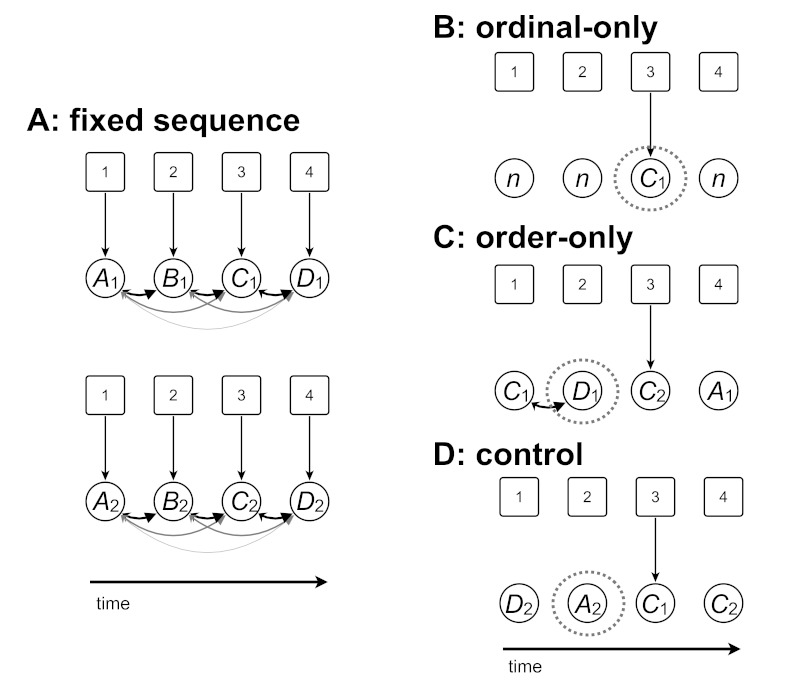Figure 2.
Schematic illustration of memory structures of fixed sequences (Panel A) and derived transfer sequences (Panels B-D). In all cases, encircled letters correspond to elements of a sequence, with sequential presentation going from left to right. The boxed numbers above the sequence elements indicate representations of the respective serial positions. Arrows correspond to associations. A: In our view, sequence learning results in the formation of item-item as well as of position-item associations. The former are indicated by the round arrows between sequence elements, the latter by the straight arrows between the serial positions and the sequence elements. In the learning blocks, two repeated fixed sequences could be learned. It is important to note that participants learned two different sequences, A1-B1-C1-D1 and A2-B2-C2-D2. The italic letters indicate a sequence element and the indices the sequence identity. Therefore, A2 corresponds to a different target screen location than A1, etc. B: To test for position-item associations, the ordinal-only sequences feature trials that have not been used during learning (indicated as n), as well as test trials where a target screen location from one of the learned sequences occupied the same serial position, n-n-C1-n. (Element C1, now being the third element in the sequence, as in the upper part for Panel A.) C: Only item-item association information is available. In this case, an order-only trial needs to be preceded by the same sequence element as it is during the learning phase. For example, in the sequence C1-D1-C2-A1, element D1 is preceded by element C1 as during the learning phase (importantly, C1 and D1 both are from the same, but C2 is from a different sequence, as mirrored by the indices), so the reaction time (RT) during the trial with element D1 is considered (see Panel C). D: Situations where no associative knowledge could be used for prediction/retrieval facilitation. In this case A2 is now preceded by D2, unlike in the learning phase. Hence the RTs in the trial where the target appeared at screen location A2 are considered. Please note that unlike in the examples, the test item appeared at all possible serial positions, not only at the third serial position. Analyzing trials where two target screen locations appear in the learned order at the wrong serial position can provide insights into item-item associations.

